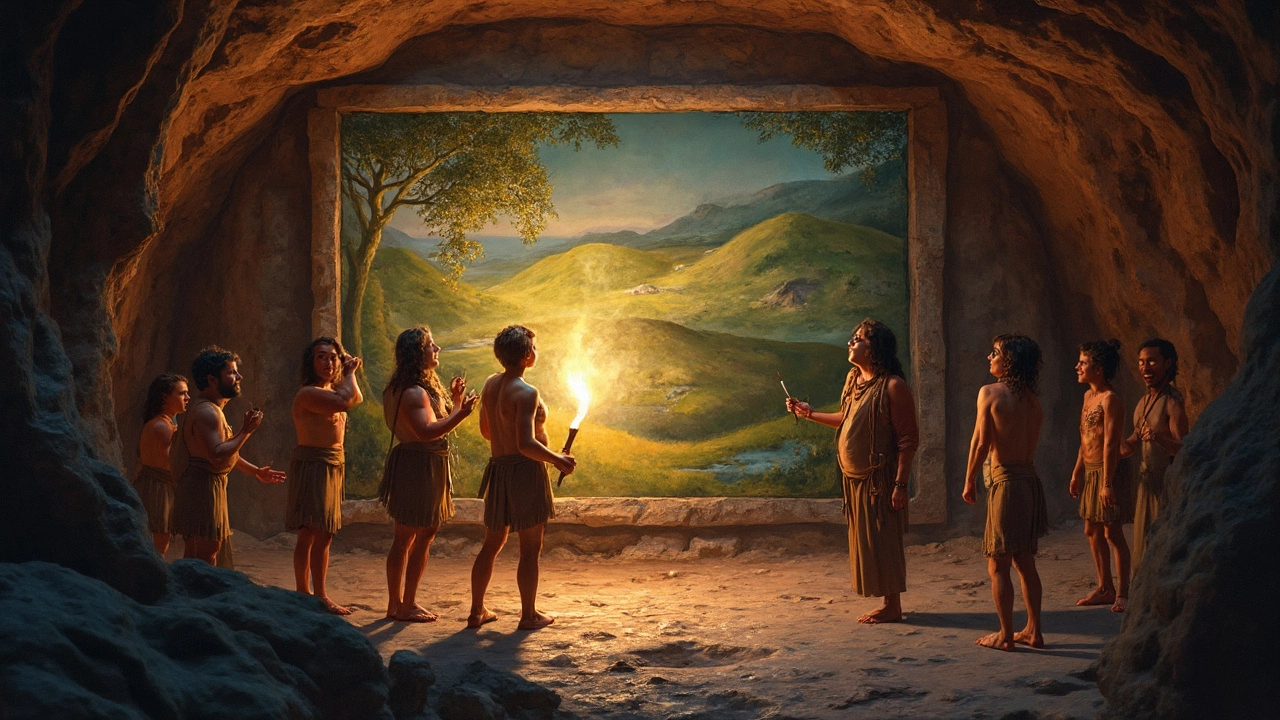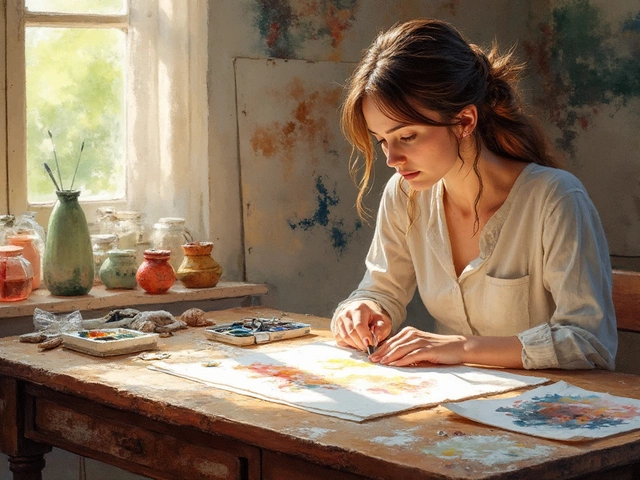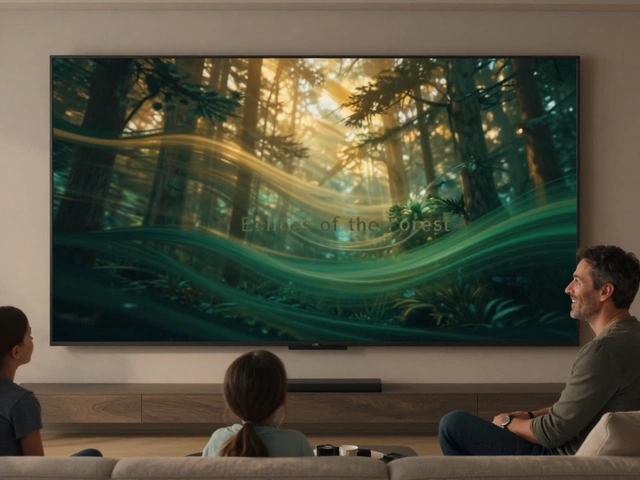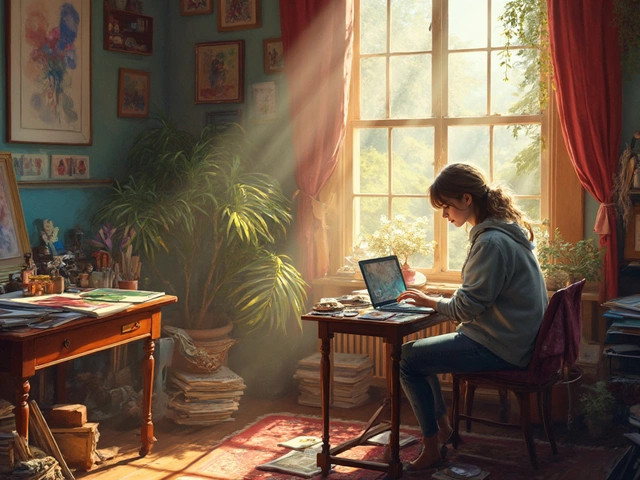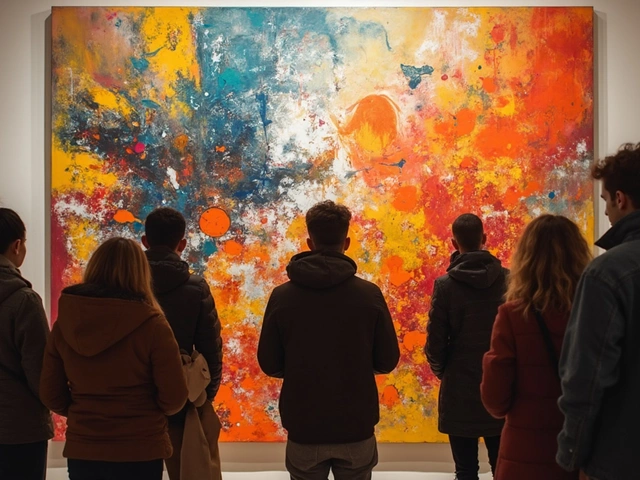When you think of landscape painting, your mind might jump to oil paintings hanging in museums or the views you find on Instagram. But humans have actually been captivated by nature for way longer. The oldest known landscape painting isn’t some fancy framed artwork—it’s thousands of years old, stuck on a wall in what used to be someone’s home.
This ancient masterpiece was found at Çatalhöyük, a Neolithic site in Turkey. It’s not just lines and dots; it actually shows volcanoes and houses, making it wildly different from those handprints and stick figures you’d find in other old caves. We’re talking about art that’s roughly 9,000 years old. That’s long before cities and smartphones, back when “painting” was more about survival and cravings to make sense of the world.
Why did people bother drawing hills and volcanoes back then? And how did this one painting survive while others faded away? The story behind this mural isn’t just about a single piece of art; it’s about humans learning to see and share the world around them. If you think your favorite hiking spot is inspiring, wait until you hear how these ancient folks captured what they saw—without any tech or easy supplies.
- Unearthing the First Landscape
- Why Ancient Folks Painted Nature
- What Makes the Çatalhöyük Mural Stand Out
- How Landscape Painting Evolved After
- Tips for Spotting Ancient Landscape Art
Unearthing the First Landscape
The story of the oldest landscape painting goes back to the 1960s, when archaeologist James Mellaart was digging at Çatalhöyük in central Turkey. This wasn’t your average find—no gold, no statues—just a mural on a mudbrick wall. The painting showed a grid of rectangles (probably houses) and a twin-peaked mountain in the background. People now think that’s a big deal, because it’s not just doodles or patterns—it’s the oldest known image of a real place made by humans.
The volcano, scientists say, was likely Hasan Dağı, which hadn’t erupted in anyone’s lifetime by the time folks were painting their mud walls. The mural is dated to around 6200 BCE. Here’s where it gets wild: A 2017 study matched ancient ash from the site to an actual eruption from Hasan Dağı, backing up the local’s memory from way before anyone could write stuff down.
"This rare representation shows a community with a real sense of place. They aren’t just surviving; they’re making sense of the world and leaving a record for others." – Mark M. Jarzombek, architectural historian
Instead of displaying it on a tablet or scroll, these ancient people put their landscape on a wall where everyone in the family could see it every day. That’s finding pride in your surroundings in a time when survival wasn’t guaranteed.
| Fact | Detail |
|---|---|
| When discovered | 1963, Çatalhöyük, Turkey |
| Estimated age | Around 8,200 years old (c. 6200 BCE) |
| Key features | Houses, volcano, birds-eye view |
| Material | Pigment on mudbrick wall |
| Current location | Original wall at Çatalhöyük site |
So if you ever visit the site, you’re not just seeing some old mud. You’re standing in the same space where the world’s first landscape painters got creative, turning their neighborhood and a dramatic volcano eruption into a story for everyone to see.
Why Ancient Folks Painted Nature
It’s easy to assume that people started painting just for decoration, but there’s more going on with these ancient pictures of the land. The folks who lived at places like Çatalhöyük didn’t have Instagram, so painting a landscape was a big deal. Some researchers think these paintings were almost like maps or guides for the community. That famous Çatalhöyük mural doesn’t just show a mountain for fun—it likely shows their nearby volcano, Mount Hasan, and the layout of their homes below. It might have been a way to pass down knowledge about eruptions or where to find safety or resources.
There’s also strong evidence that early landscape paintings played a role in rituals. People often painted scenes tied to their beliefs, trying to connect with nature or the spirits they thought lived there. Some scholars argue that drawing mountains, rivers, and landforms was a way to show respect, or even to ask for protection and good luck from forces they couldn’t control. So, painting nature wasn’t just about pretty pictures; it was about survival and making sense of their world.
- At Çatalhöyük, the large mural of houses and a volcano is believed to be the oldest known example of a landscape painting.
- Other early art—like the famous Lascaux and Chauvet caves—focused more on animals, so finding a scene that highlights the land itself is rare.
- Landscape images became a tool for telling stories, teaching younger generations, and mapping out the territory that mattered to the community.
These landscape paintings are proof that even early humans got the urge to share what they saw and felt with others. It helped them build identity, remember important events, and maybe even warn their neighbors: “Hey, watch out for that volcano!”
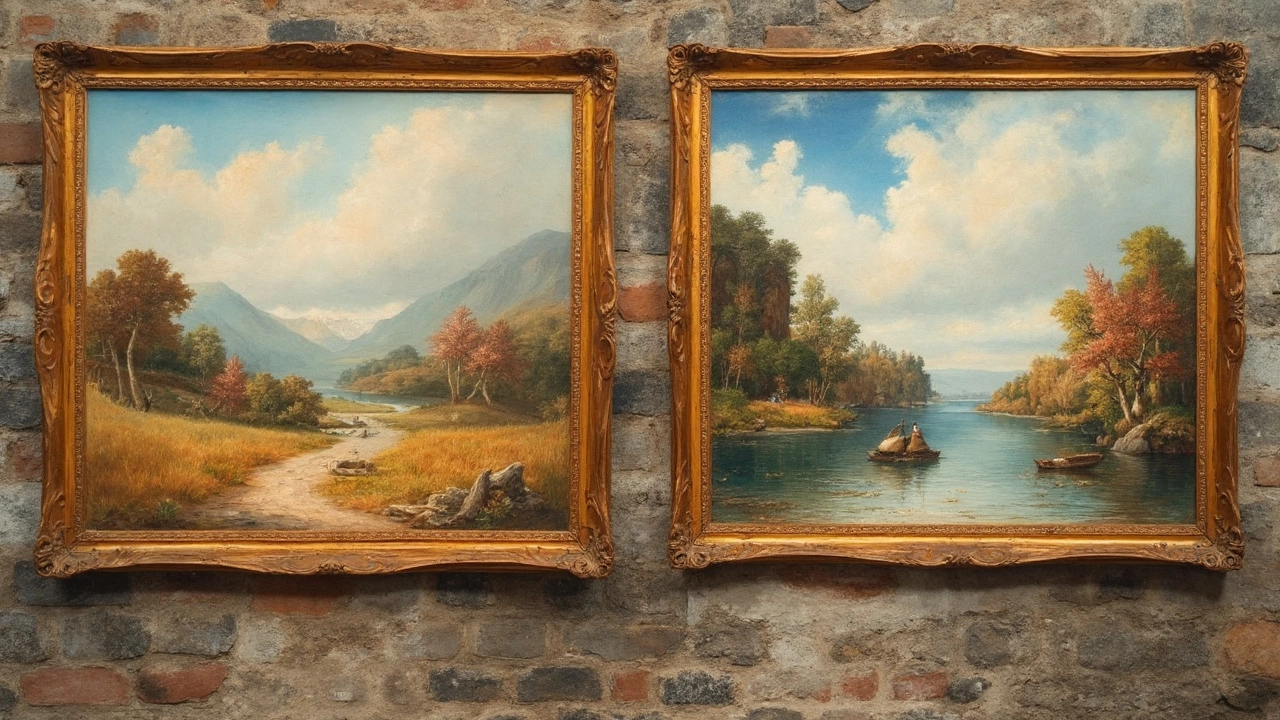
What Makes the Çatalhöyük Mural Stand Out
The Çatalhöyük mural isn’t just old—it’s unique for a bunch of reasons that make art historians and everyday folks raise their eyebrows. First, it was discovered in the 1960s in a Neolithic house at the archaeological site of Çatalhöyük, Turkey. The mural is estimated to be about 9,000 years old, which blows most other prehistoric paintings out of the water. What’s wild here is that, unlike most early art showing animals or handprints, this mural actually focuses on the landscape. Some experts even call it the oldest landscape painting ever found.
The mural measures roughly three meters across and one meter high. Instead of animals or people, it shows jagged black forms—interpreted as the twin-peaked volcano of Hasan Dağı—and a cluster of rectangle shapes below, which most researchers think were houses in the settlement. If you squint, you might see an eruption. Researchers believe the mural could be a "map" showing the town and nearby volcano. That's a big deal because it suggests folks back then already thought about space, location, and maybe even felt a sense of home.
If you’re curious about what’s actually in it, check this breakdown:
- Medium: Painted with mineral-based pigments directly on a plaster wall.
- Subject: Landscape with volcano (Hasan Dağı), and rows of houses.
- Technique: Basic, but intentional outlines and fills—no random doodles here.
Scientists even used volcano ash to date the last eruption of Hasan Dağı, and it turns out it matches the mural’s age. That’s some high-stakes fact-checking from Mother Nature herself.
| Feature | Details |
|---|---|
| Date | ~6600 BCE (about 9,000 years ago) |
| Location | Çatalhöyük, Central Turkey |
| Size | Approx. 3m wide x 1m high |
| Main Subject | Volcano (Hasan Dağı) and settlement |
| Material | Natural ochres, mineral pigments on plaster |
Why does all of this matter? Before this discovery, nobody had proof that people this ancient could take what they saw in the real world and slap it up on their walls as a picture of their actual neighborhood. Most early art was about animals or spiritual stuff. The Çatalhöyük mural shows humans thinking about where they lived and what was around them, not just about survival but about perspective. It’s like the first attempt at a Google Earth snapshot, just way more raw.
How Landscape Painting Evolved After
The story of painting landscapes didn’t just sit still after Çatalhöyük. If you fast forward a couple thousand years, you’ll find early Egyptians, Greeks, and Romans using wall art to show off their cities, farms, and even the mountains around them. It wasn’t just for decoration—these paintings usually had meaning, like showing local pride or telling a story about the land and its gods. Jump a bit further ahead, and the Chinese were painting scrolls packed with misty hills and rivers by the 4th century CE. They weren’t just copying what they saw, though—scroll artists added their own feel, making the land seem both real and dreamy.
By the Middle Ages, a lot of European painting stuck to religious stuff or portraits. But landscapes snuck into the background, hinting at bigger worlds beyond the frame. It took until the Renaissance, around the 15th century, for landscape painting to start going solo. For the first time, artists like Leonardo da Vinci and Albrecht Dürer painted real outdoor scenes just because they looked good, not because they were part of a story. That was something new.
“In landscape art, the physical world itself becomes a story,” wrote Kenneth Clark in his classic book, Landscape into Art. “It’s not just a background, but the main event.”
Once artists realized they could focus on mountains, oceans, and forests, the ball really got rolling. Here’s how things moved after that:
- 17th century (Dutch Golden Age): Painters like Jacob van Ruisdael made landscapes the real star, not just a setting. These scenes showed actual places, weather, and farming life—sometimes with wild clouds or choppy rivers for extra drama.
- 18th and 19th centuries: Artists in Britain, France, and America went wild for nature. This is when big names like John Constable, J.M.W. Turner, and the Hudson River School started showing off clouds, thunderstorms, or sunsets like it was a competition. Realism and impressionism became huge.
- 20th century: Landscapes got abstract. Think Picasso squiggling out mountains or Georgia O’Keeffe painting the American Southwest in bold, simple shapes. Photography also made it easy to capture and share outdoor views fast.
If you want hard numbers, art historians actually keep track of this stuff:
| Time Period | Estimated Number of Major Landscape Paintings |
|---|---|
| Ancient Era (before 5th c. CE) | Fewer than 100 |
| Medieval (5th–15th c. CE) | Several hundred, most backgrounds |
| Renaissance to 18th century | Thousands, mostly in Europe & Asia |
| 19th century | 10,000+ |
| 20th century to now | Millions (including photos) |
So next time you’re looking at a leaf in a painting or a wild sky in a photo, you’re actually seeing the result of thousands of years of changing tastes and styles. People went from painting volcanoes on their walls to turning nature scenes into billion-dollar industries. Even if your style is stick figures, the landscape tradition is older (and more flexible) than most people realize.
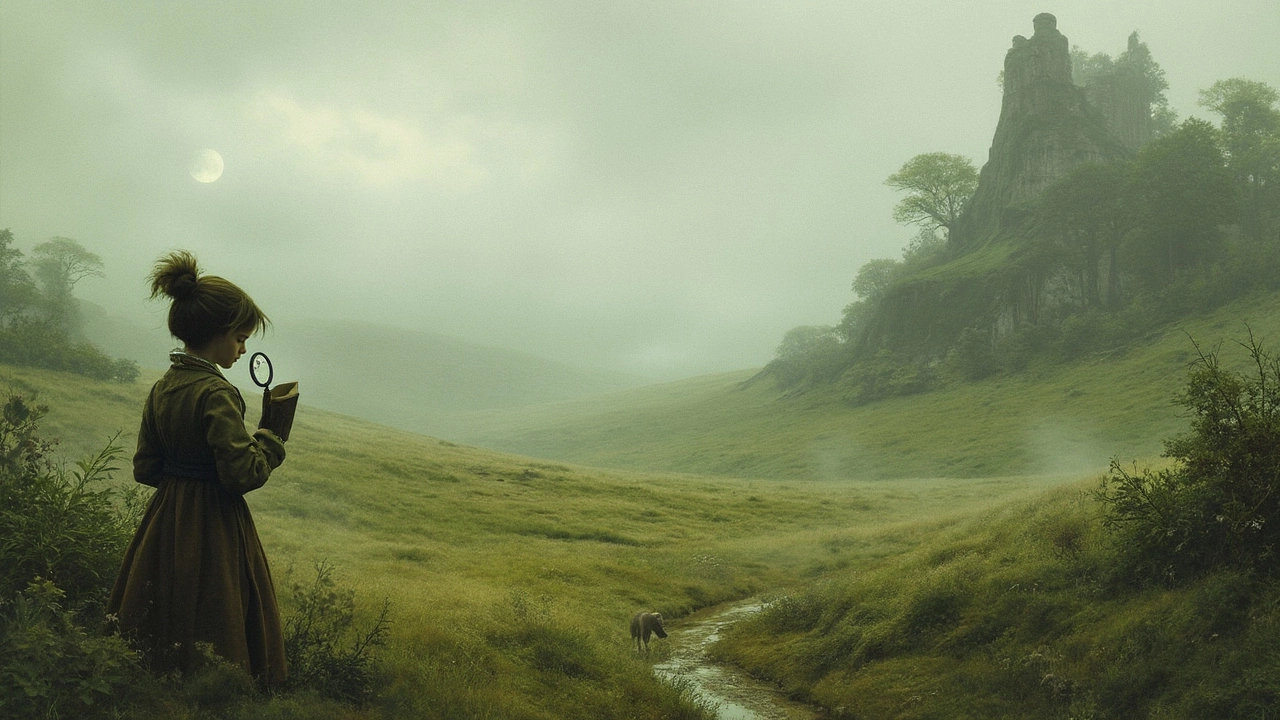
Tips for Spotting Ancient Landscape Art
If you’re curious about how to spot real-deal ancient landscapes, you don’t need to be some sort of Indiana Jones. There are some dead-simple tricks and facts that even museum newbies can use when checking out history’s earliest artwork. Here’s what you should keep your eyes out for:
- Shapes over detail: Back around the time the oldest landscape paintings were made, nobody was focused on realism. The people at Çatalhöyük drew volcanoes looking more like triangles or mounds. If you see lots of shapes and not many details—like basic houses or lava flows—that’s a good clue.
- Natural colors: Ancient painters didn’t have a color aisle to pick from. Think red and ochre from iron oxide, some black from charcoal, and white from chalk or ash. If a mural uses a lot of earthy reds, blacks, and whites, it could be truly old.
- Nothing fancy: Early art was simple. No perfect perspective, no shading, and no attempt to paint things exactly as they look in real life. It’s more about showing “what’s there” than “how it looks” in a photo.
- Look for mixtures of people and places: Some old landscapes, like the one at Çatalhöyük, mix people, animals, or villages with nature (like volcanoes). Ancient artists often wanted to tell a story, not just show a pretty view.
When I visited a few museums with my wife Althea, we found it helpful to check out the plaques—most curators love to point out details that you might otherwise miss. If you travel in Europe or the Middle East, look for museum descriptions mentioning the Neolithic or sites like Çatalhöyük, Lascaux, or Altamira.
Here’s a handy comparison of what you’ll probably notice between ancient landscapes and later, more polished ones:
| Feature | Ancient Landscapes | Later Landscapes |
|---|---|---|
| Style | Abstract, simple shapes | Detailed, realistic |
| Color | Mostly reds, blacks, whites | Wide color range |
| Subjects | Nature plus villages/animals | Scenery, often without people |
| Purpose | Storytelling, recording surroundings | Aesthetics, emotion, perspective |
One quick tip: If you spot artwork that feels super basic and is loaded with earthy tones, you might be looking at something similar to the oldest landscape painting ever found. Pay attention to where the art was discovered and what materials the artists used—museum guides and catalogues often drop these facts. You’ll soon be able to separate new art from pieces that actually go back thousands of years.
